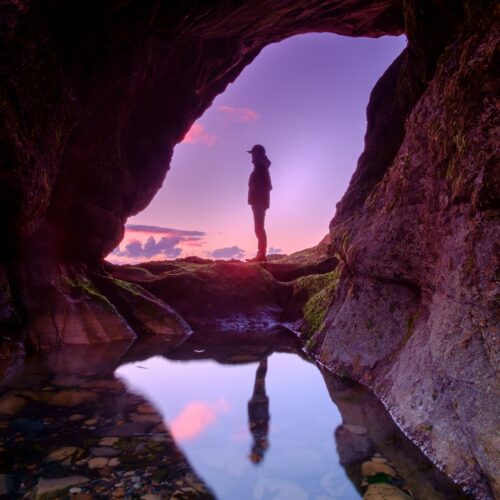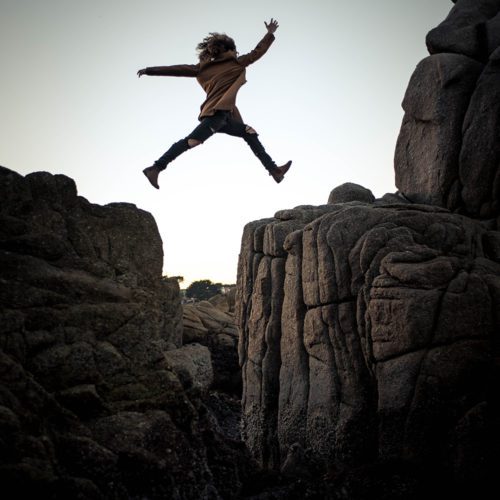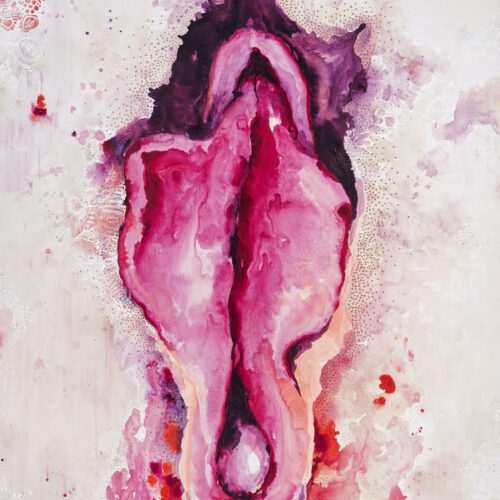
I’ve come to appreciate a delicate balance. And I assure you, I do not mean “balance” in the typical sense – that droll and droning work-life balance conversation that saturates most women’s media these days and bores me to no end (I’ve officially given up on that term, preferring “integration” these days, but that’s another topic I’ll write about in a separate post…).
No, the balance to which I’m referring to is much deeper than that, and I’ve come to see it at the heart of women seeking to creating change. What I’m talking about is essentially a paradox: it’s about taking yourself (your ideas, your needs, your intentions, your dreams) very, very seriously while at the same time not taking yourself too seriously. It’s about holding all of that as sacred and true, but loosely, knowing that at any moment you might receive new information or insight that changes your mind or requires you to shift your balance a bit.
Let me paint a clearer picture of what I’m talking about here. I was once working with this incredibly wise woman who gifted me with the perfect visual to describe the delicate balance I’m referring to. As I sat with her, wringing my hands, I shared my angst at managing my ego at the same time I was also seeking to honor the divine and serendipity. I now know what I was talking about was the age-old discussion of free will and fate. I recall my despair and confusion so vividly. I felt torn in two. Could I be myself – confident, self-assured and driven – and still be open and willing to surrender to the wisdom of the universe? What I was essentially grappling with was control. In my mind, it was one or the other – either I had the reins or the universe did; not both. And yet, I loved, trusted and wanted to honor them both. Thus my angst; I felt like I had to make a choice. I didn’t know how to have them both.
This wise woman smiled at me asked a simple question that changed my life: “can you be the powerful wave that rises up to a crest and then comes charging toward the shore, and at the same time look over your shoulder and see that you are a part of this massive ocean?”
With this beautiful image, she opened my eyes to how it would look if I held both of those truths – these two loves – simultaneously. In that moment, I saw how I wouldn’t have to shrink or play small to bow down at the feet at the divine and I also wouldn’t become an ego maniacal narcissist, thinking I was solely responsible for turning the world on its axis. I got how we – the universe and I – could work so beautifully in concert with one another. It was exhilarating.
I share my own story, knowing that it is far from original, in many ways representing the universal struggle of the human condition. Certainly our society does nothing to ease the tension, being a country built upon the principles of independence, self-reliance and freedom. So it’s only natural that I would feel torn and conflicted, right?
As my practice centers primarily around women – powerful, self-reliant, opinionated and driven women like myself – I have become acutely aware of just how relevant this story and, indeed, this topic is to our perception of ourselves as architects of change. I see this topic surface time and time again as I work with women. Most commonly, it comes up in one of two ways: women are either concerned about being “a control freak” or they are concerned their “ego is out of control.” No matter how you slice it, they are concerned and berate themselves for “white knuckling” their lives or their circumstances. In most cases, these women find their default response is to drop the reins, back-pedal or shrink themselves down to an almost minuscule version of the woman they know themselves to be. It’s like a reflex – one that I am all too familiar with from my own story. And yet, I see how it’s not a winning strategy for women, triggering resentfulness, bitterness and disengagement with life – essentially because they are acting in ways that are counter to who they truly are. I get it: it’s a tug of war and they have elected (albeit reluctantly) to drop the rope. Better to save face than to become your worst version of yourself.
But what if there were an alternative as this wise woman suggested? What if there were no rope? And we didn’t have to tug? What then?
Elizabeth Gilbert in her book Eat, Pray, Love offers another powerful image that illustrates how this balancing act might look. Much as my wise woman did, Gilbert describes the interplay between destiny and free will as a relationship – “a play between divine grace and willful self-effort.” I personally gravitate to the notion of “play” here…much more appealing than “tugging”. The way she describes it, we are neither entirely a puppet of the gods, nor entirely the captain of our own destiny; we are a little of both:
“We gallop through our lives like circus performers balancing on two speeding side-by-side horses – one foot is on the horse called ‘fate’, the other on the horse called “free will.’ And the question you have to ask every day is – which horse is which? Which horse do I need to stop worrying about because it’s not under my control, and which do I need to steer with concentrated effort?”
When I use this image in working clients in my women’s circles, I often will joke that I’ll be confidently riding along, like a powerful amazon with one foot on each horse, and I’ll look down and see that my “fate” leg has completely atrophied, meaning that my entire weight (existence) is being supported by my “free will” leg which is sculpted muscle but is locking up with the stress of it all. It always gets a laugh (especially with some good sound effects thrown in), but it illustrates the point that Gilbert makes about it being a DAILY question you need to ask yourself. Because without that daily check-in, you run the risk of sliding down that slippery slope of the ego.
So what does a daily check-in look like to you? I think you know. Is it a deep breath? Is it a favorite phase that pulls you back to center? Is it meditation? Prayer? Laughter?
Not to belabor Elizabeth Gilbert as an example (can you tell I’m a big fan?), but when I saw her speak recently, she gave some wonderful historical context for just how we came to be this way in western society. She spoke about the notion of “creative genius” and how it was originally thought of an expression of divine inspiration that would visit and flow through particular individuals. Then, sometime after the renaissance and the advent of rational humanism, “genius” was understood as something that actually took up inside certain people, rather than flow through us. So people were seen as “being a genius” instead of “having a genius.”
So in this context, it would make sense why we have such angst and fear around our own creativity and drive and inspiration. In this model, there is no flow, there is only a pile of internal pressure and expectations to have all the answers. In this model, all the doorways to the universe or divine grace have signs on them that read, “out of order”. So back to self-reliance we go.
But here is what I’ve come to appreciate: if you can hang out on top of the horses and keep your balance in check, there is a lot of ease and power than can find its way into your life. What once was a solitary slogging through a mine field, can become a graceful dance with a little cha-cha-cha thrown in to boot.
Simply put, the horses can ride together a lot better than we give them credit for. In fact, they were originally trained with just that in mind – it’s just that the damn rider got in the way so many times it messed up their once perfectly organic relationship.
So here is an invitation to play more intentionally with who you are in relation to the greater power you believe in. Reacquaint your horses with one another, adjust your saddle or get a new one. Experiment with loosening your hold on the reins but resist the urge to drop them all together. Recalibrate yourself daily as you teach yourself how to ride again and, as Gilbert suggests, you will eventually “assume custodial responsibility for the maintenance of your own soul.”




